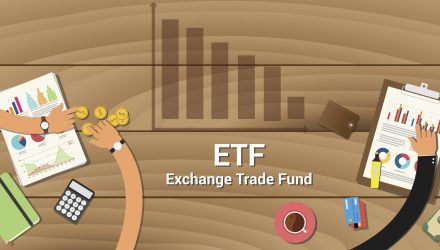Through a broker, an investor can simply specify the number of shares he or she wants to purchase. That order is then fulfilled at the particular exchange where the ETF trades.
Just like stocks, ETFs will had a bid price and an ask price. The difference between these two prices represents the spread, and once the order is fulfilled, the investor owns the specified number of shares in the ETF.
The way an investor goes about purchasing an ETF is by first going through a brokerage. There are several brokerages investors can choose from, but here are some things they can look out for when choosing:
- Costs and incentives: various brokers will offer certain incentives based on the type of investor. For example, certain brokers will lower their fees for buy and sell transactions if the accountholder is a high-volume trader.
- Research: investors who like to utilize fundamental analysis or technical traders who like to use charts will want to choose a broker with robust research capabilities.
- Trading platform: investors who are looking to simply buy and hold ETFs for the long term won’t necessarily need an advanced trading platform. However, high-frequency traders will want a platform with the necessary capabilities to perform quick transactions.
- Support: certain investors will want the face-to-face interaction of speaking with a financial advisor, which will be easy to access if the brokerage where they will purchase ETFs is also their personal bank. Other brokerages can offer technical support in the way of call centers, email or online documentation.
Investing Apps to Purchase ETFs
Because of their flexibility, investors can buy and sell ETFs using the latest investment apps. Below are five examples of investing apps:
- Robinhood: Robinhood is an attractive option in that it offers commission-free trading with no minimum balance. It’s a minimalistic approach to mobile investing, which means it doesn’t offer vast research and analysis capabilities. Nonetheless, it offers a barebones option for the beginning or advanced investor.
- TD Ameritrade: TD Ameritrade offers over 100 commission free trades for certain ETFs from market movers, such as iShares and Vanguard. On top of that, TD Ameritrade does not carry a minimum account balance requirement and no maintenance fee IRAs. In addition, the mobile app also offers extensive research capabilities at your fingertips, including charts and portfolio analysis.
- Acorns: Acorns is a micro-investing option that allows you to purchase shares incrementally and make recurring investments over time. It is perfect for the beginning investor without access to a large initial capital investment. Acorns charges $1 per month, but is free for college students.
- Stash: Stash is another micro-investing option for beginners that requires an account minimum of only $5. Stash’s investment philosophy consists of offering hand-picked investments on its platform, which can be tailored based on the investor’s risk profile and objectives.
- E*TRADE: E*TRADE has been around since 1982 and has been one of the purveyors of online trading since the technology’s early inception. Their mobile investing app is suitable for all types of investors and comes with commission-free ETF trading, but there is a cost–$6.95 commissions on individual stock trades and a $500 account minimum.
Investment Costs of ETFs
Because an ETF can track an index, it can be passively-managed. This translates to lower costs to investors when compared to mutual funds, which are typically actively-managed.
Actively-managed mutual funds carry greater operating costs because they have to pay analysts and other research specialists. The lower costs of ETFs show in their expense ratio, which is the cost to run the fund.
Since stocks themselves don’t represent shares of a fund, there are not expense ratios attached to them.
For more educational information on ETFs, click here for Education Central.
